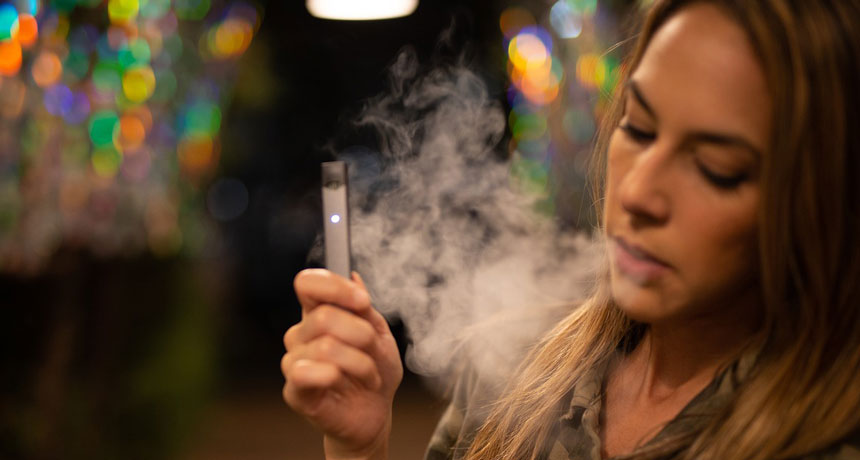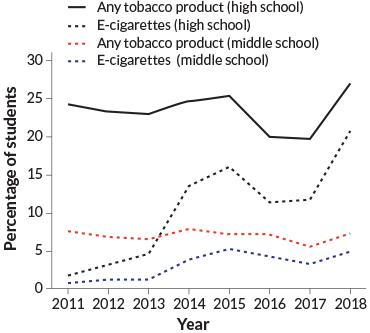FDA restricts the sale of some flavored e-cigarettes as teen use soars
The number of high schoolers who vape rose 78 percent from 2017 to 2018

FEWER FLAVORS The FDA has moved to limit sales of certain flavored e-cigarettes that are popular with young people.
sarahjohnson1/Pixabay
In an attempt to curtail an alarming rise in teenage vaping, the U.S. Food and Drug Administration announced restrictions on the sale of certain flavored e-cigarettes that appeal to young people on November 15. The agency also said it would seek to ban menthol cigarettes, long a goal of public health advocates, as well as flavored cigars.
The flavor restrictions coincide with the release of new data showing that e-cigarette use by high school students shot up 78 percent from 2017 to 2018. The data, part of the National Youth Tobacco Survey, were reported November 16 in the Centers for Disease Control and Prevention’s Morbidity and Mortality Weekly Report.
“If the policy changes that we have outlined don’t reverse this epidemic, and if the manufacturers don’t do their part to help advance this cause, I’ll explore additional actions,” FDA commissioner Scott Gottlieb said in a statement.
Gottlieb said that only stores that restrict access to the products to customers 18 years or older will be able to sell certain e-cigarette flavors, such as mango or crème brûlée. There will also be limits on online sales, but there are no restrictions on the flavors menthol, mint or tobacco.
Some experts said the measures didn’t go far enough. “Even if stores are compliant with not selling to people under 18, youth are getting their tobacco products from other people,” says Deborah Ossip, a public health researcher at the University of Rochester Medical Center in New York. “There are work-arounds that may limit the effectiveness of this limited ban.”
Vaping has risen dramatically among teenagers over the last year. Among high school students surveyed, 20.8 percent said they had used e-cigarettes at least once in the last 30 days in 2018, compared with 11.7 percent in 2017 — an increase of 78 percent.
The data also suggest that more high school students are vaping regularly. Of those who had used an e-cigarette in 2018, 27.7 percent had vaped on at least 20 days in the last month, a sign of possible addiction, experts say. That was true for 20 percent of these students in 2017.
Among middle school students, 4.9 percent of survey respondents in 2018 said they had vaped in the last month, compared with 3.3 percent in 2017. Nicotine use is especially dangerous for young people, who are at higher risk of addiction than adults and whose developing brains are especially vulnerable to damage from the chemical.
It will take time to measure whether these regulatory actions have an impact on teen’s use of e-cigarettes.
“It’s really unfortunate that the devil is out of the gate,” says Donna Vallone, the chief research officer of the Truth Initiative, a public health organization in Washington D.C. “Now the question is how best to deal with the fact that you have this cohort of kids who have [had] a serious exposure to nicotine.”
Public health advocates, however, cheered the FDA’s proposal to ban menthol cigarettes. The government had banned cigarettes flavored with fruit or candy in 2009, but excluded menthol. In 2016, menthol cigarettes accounted for 35 percent of all cigarette sales.
Research has shown that young people are especially drawn to menthol cigarettes, and there is evidence that those kids whose first cigarettes are menthol flavored are more likely to become regular smokers.








